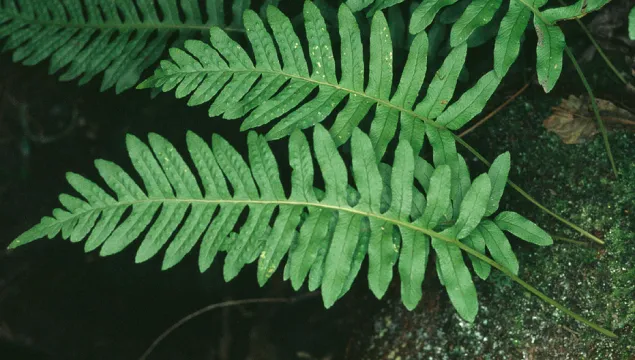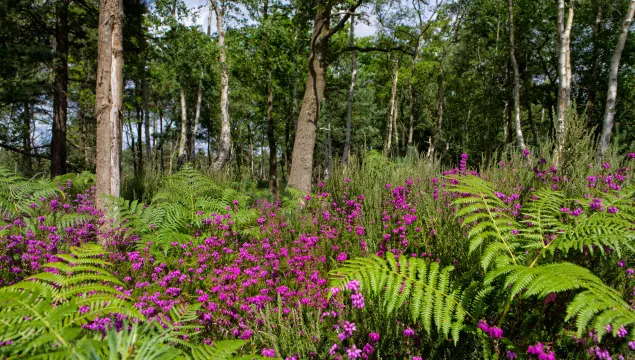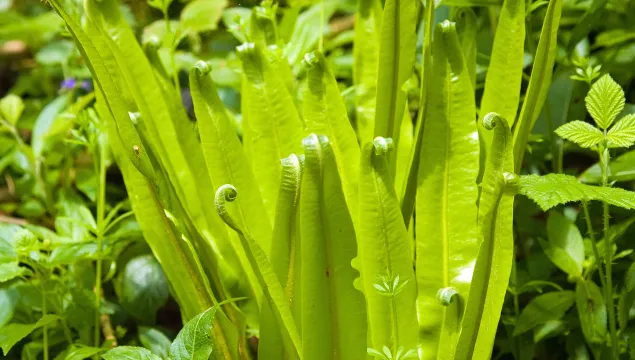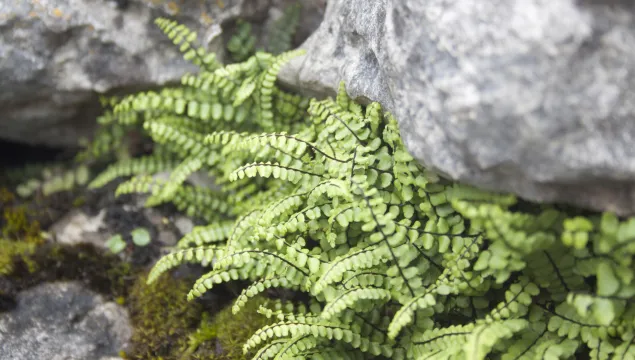
Common polypody
The common polypody is a hardy fern of damp, shady places in woodlands. It also makes a good garden fern. It has ladder-like, leathery foliage with pimply undersides - these spots are the spores.

The common polypody is a hardy fern of damp, shady places in woodlands. It also makes a good garden fern. It has ladder-like, leathery foliage with pimply undersides - these spots are the spores.

Our most familiar fern, bracken can be found growing in dense stands on hillsides, moorland, heathland and in woodlands. It is very large and dies back in winter, turning the landscape orangey-brown.

The hart's-tongue fern is a hardy fern of damp, shady places in woodlands. It also makes a good garden fern. It has simple, tongue-shaped, glossy, green leaves that have orange spores on their undersides.

A small, tufted fern, maidenhair spleenwort can be found growing out of crevices between rocks, in walls and on mossy branches across the UK.

With club-shaped leaflets on its fronds, wall-rue is easy to spot as it grows out of crevices in walls. Plant it in your garden rockery to provide cover for insects.

A classic fern of woodlands across the UK, the male-fern is also a great addition to any garden. It grows impressive stands from underground rhizomes, dying back in autumn.

One of the prettiest hardy ferns, the lady fern is delicate and lacy, with ladder-like foliage. It makes a good garden fern, providing attractive cover for wildlife.
The flowers of Opposite-leaved golden saxifrage form 'trickles of gold' along riverbanks and streamsides in shady areas like wet woodlands.
Toadflax-leaved St John's-wort has star-shaped, bright yellow flowers. It is a rare plant, with most of its population existing on Dartmoor. It likes steep, sunny slopes, acidic soils and plenty of space.
The subject of much myth and legend, and a herbal remedy, Perforate st John's-wort is a familiar flower. It has star-shaped, bright yellow flowers and lots of tiny holes in its leaves that give off a 'foxy' smell.
As its name suggests, the Marsh violet likes damp spots, such as marshes, bogs and wet woods. It is a low-growing plant with kidney-shaped leaves and pale lilac flowers.
Our most familiar wild violet, the Common dog-violet can be spotted in a range of habitats from woodland to grassland, hedgerows to pastures. Its pansy-like, purple flowers appear from April to June.